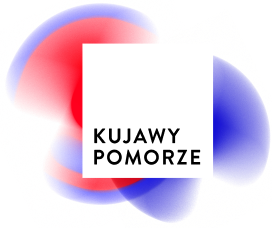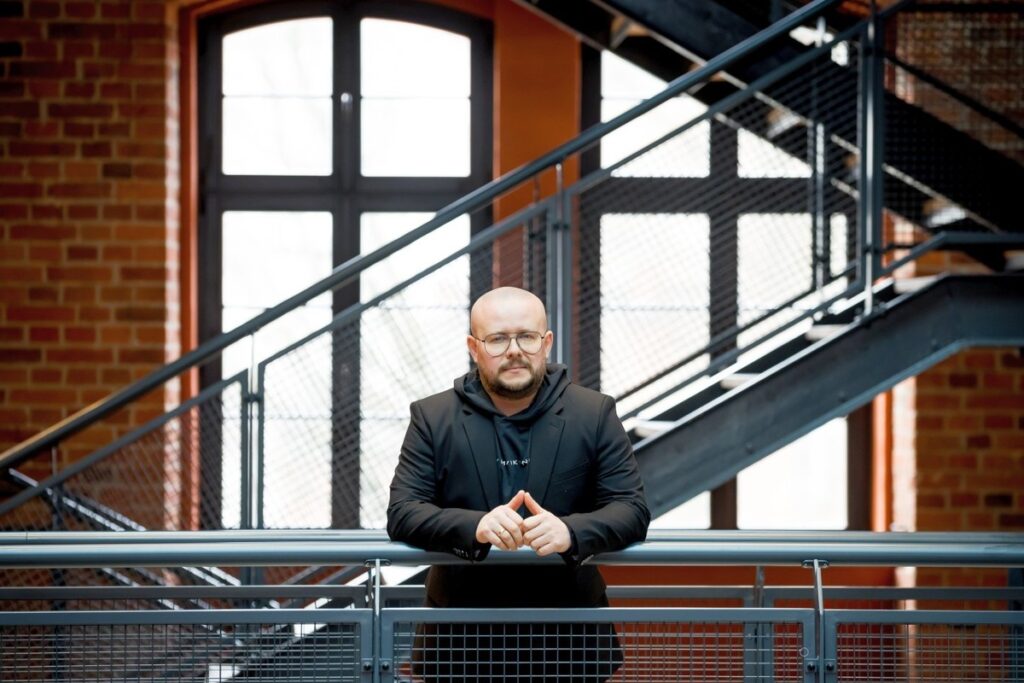
We Love Designing New Things
An Interview with Przemek Gawęda, owner and chief architect at Archigeum, graduate of the Faculty of Architecture at the Silesian University of Technology in Gliwice, PhD student at the Joint Doctoral School of the Silesian University of Technology, and one of the 40 most promising figures in European architecture in the 40 Under 40 competition in 2023. Twice distinguished in the Architect of the Year Awards, in both 2023 and 2024, at the global level.
Are you a fan of ski jumping?
I’ve been interested in ski jumping since the Nagano 1998 Olympic Games. I was impressed by Kazuyoshi Funaki and the Japanese team. Then came the era of Adam Małysz. I never imagined that 20 years later, as an architect, I would design a ski jumping hill—the Średnie Krokiew complex. To do it well, my team and I visited most of the ski jumping hills in Europe. I had the privilege of accessing every possible spot and observing the jumpers up close. It was an extraordinary experience. There’s something magical about this sport—an eternal human pursuit of flight.
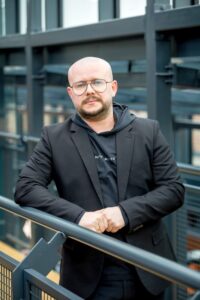
Przemek Gawęda fot. Tomasz Czachorowski/eventphoto.com.pl dla UMWKP
Your tunnel project at Wielka Krokiew in Zakopane last year could revolutionize this sport.
The installation of the tunnel may be seen as a revolution in ski jumping, but in reality, this project is part of a long-term evolution that has been shaping the sport for decades. As an engineer, I view ski jumping from a different perspective. I notice details, nuances, and physical phenomena that can make a difference and influence the quality of a jump. If a ski jumper’s flight, which follows a parabolic trajectory, can be expressed in numbers, then we arrive at a pure mathematical equation. Essentially, a jumper in flight is governed by pure physics and mathematics—and that, in itself, is design.
Our conversation is prompted by your award-winning project, the House Over the Moat in Toruń’s Fort X. Did you encounter any challenges while working on this unique project?
I take great satisfaction in transferring what I see in my imagination onto paper. Not everything can be described in words, which is why we architects rely on drawings. When I observe a space, I envision what could emerge within it. Sometimes, the ideas come quickly – other times, they require more time. The House Over the Moat is a result of our team’s deep interest in renovation and adaptation. Like any project, this one had its constraints. Fort X is located next to a flood embankment, which presents challenges. However, we operate under the belief that no problem is unsolvable. In fact, challenges are often necessary to create great architecture.
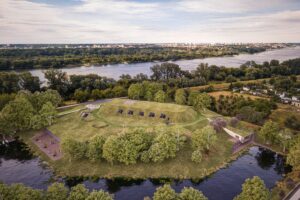
Wizualizacja Fortu X fot. Pracownia Archigeum
Are there any projects you are particularly proud of?
Every project in our studio is unique in its own way. We enjoy designing new things, often working on concepts we’re encountering for the first time. I take a research-oriented approach to design—before sketching a concept, I ask myself a series of questions: What do I actually want to achieve with this project? Where should it take me and the investor? This is why we often negotiate with investors—for example, a house can be designed in as many ways as there are investors, site contexts, and personal visions, and each of those can be special in its own way. The adaptation of Fort X is a project we’re particularly excited about—we’re currently awaiting administrative approvals before moving forward with its reconstruction.
Do you get frustrated when you see so-called “architectural monstrosities”?
When I see these so-called “architectural monstrosities,” I tend to smile—some of them can be amusing, even absurd. Unfortunately, they negatively impact the urban space. There’s too much meaningless, chaotic content in our surroundings, which ultimately exhausts people. It shouldn’t be that way.
Imagine a stylish, elegant suit that leaves an impression. If you start adding uncontrolled accessories or modifications, it loses its charm and stops looking good. Architecture and urban planning work the same way. When a space is designed poorly and then modified without oversight, it creates the impression that we’re surrounded by architectural monstrosities. The difference is that a badly altered suit ends up in a closet and disappears from sight, whereas poorly built architecture stays with us for decades.
That’s why the role of a city architect and urban designer is crucial. Every Polish city—even the smaller ones—should have professionals who oversee the architectural and urban aesthetic.
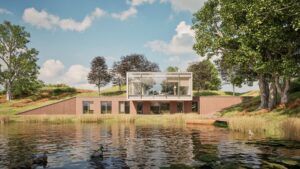
Wizualizacja Fortu X fot. Pracownia Archigeum
How do you assess new investments in the region from an architect’s perspective? Do you find the developments aesthetically pleasing and interesting?
I’ve lived in Bydgoszcz for the past 20 years. It’s a beautiful city—a bit unique, with its own charm, style, and mysteries. It evokes emotions. Of course, there are things that could be improved, and some places even frustrate me as an architect. However, I see huge potential for development, and that potential is the river.
Despite the positive changes that have already taken place in the city, the Brda River remains underutilized. There is still a lot to be done in this regard.
I also want to mention Toruń, where new architecture is emerging, starting to draw attention. I look at every city as a living organism—I compare it to a watch. As long as all the elements work together, the watch functions properly. The same applies to a city—when architecture, infrastructure, and transportation are in harmony, everything runs smoothly. Unfortunately, that’s not always the case.
What projects are you currently working on? Are any of them located in our region?
At the moment, we have several projects on the drawing board. These include sports facilities, public-use buildings, renovations, and even space-related projects—we love experimenting with new technologies.
And of course, our region is not forgotten—we’re preparing a special surprise project here. Stay tuned!
21 lutego 2025 r.

